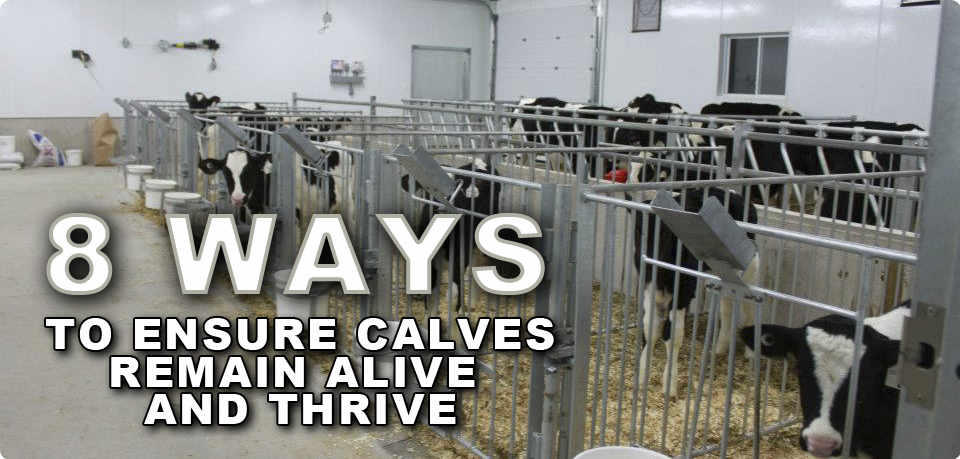We have all said at one time or another, “If only we took as good care of ourselves as we do of our cows!” However, we may be a little less precise in our care of newborn calves. It might mean we need to change our protocols so that these newborns get the same attention to detail as our human babies.
- Clear the airway: Remove mucous from around the mouth and nose, assisting the calf to breath. Inserting a piece of straw into the nasal cavity or pouring some cold water on the calf’s head should initiate a gasping reflex to promote respiration.
- Dry off the calf: The dam, if she is well and able, will dry the calf. If she needs assistance, or if you are moving the calf immediately, you can handle the drying by using a clean, dry towel. The vigorous message provided while drying around the shoulders and neck encourages respiration and helps the calf to regulate its body temperature. As water evaporates, heat is removed, which can lead the calf vulnerable to chilling. In cold weather provide blankets.
- Provide Calf Comfort: Even more than with cows, calf bedding needs to be clean and thick. Thickness is important because the bedding must be thick enough that the newborn is not exposed to all the bacteria underneath. Take a look at the calving area and you will see that newborn calves do not land in a sterile environment. The entire area cradles bacteria as well as brand new calves.
- Feed adequate colostrum. Once the calf is breathing well, colostrum should be administered. According to DCHA Gold Standards (Colostrum Management), colostrums equaling 10% of body weight should be fed in the first four hours of life. It not only provides the calf with disease-fighting antibodies, but it also increases the calf’s blood volume and improves blood circulation.
- Use a colostrometer to evaluate quality. Cattle managers are well aware of the benefits of good quality colostrum. The question is, “How do you evaluate your colostrum?” Experience tells us that if it’s yellow and thick … it’s probably good. But is that true? We can’t wait to see if the calf responds well and yet we may be saving poor quality colostrums based on visual assessment alone. Having a trusted and accurate source is well worth the investment in a colostrometer.
- Use a meat thermometer. Some sources advise using a meat thermometer to determine if the refrigerator where you store your colostrum is working properly and if your hot water heater is working properly. You can’t just assume because either of these feel cold or hot to the touch that they are working at the most effective temperature. The same attention to detail that you use in cleaning the milk pipelines in the milking parlour needs to be applied to the measureable temperatures that are used in care of your calves.
- Special Care: Calves from a difficult calving may need to be moved and handled with extra care. Surviving alive may not be enough to guarantee a healthy growing period for that newborn calf. Extra attention will save time, labour and medication if spent wisely in these early hours and days.
- Clean the calf cart! Clean the calf pails! Clean the calf bottle! Clean the esophageal tube!
The Bullvine Bottom Line:
When it comes to raising calves it’s the first little details that pay off in big returns later. See that your calves remain alive and thrive!
















Leave a Reply
You must be logged in to post a comment.